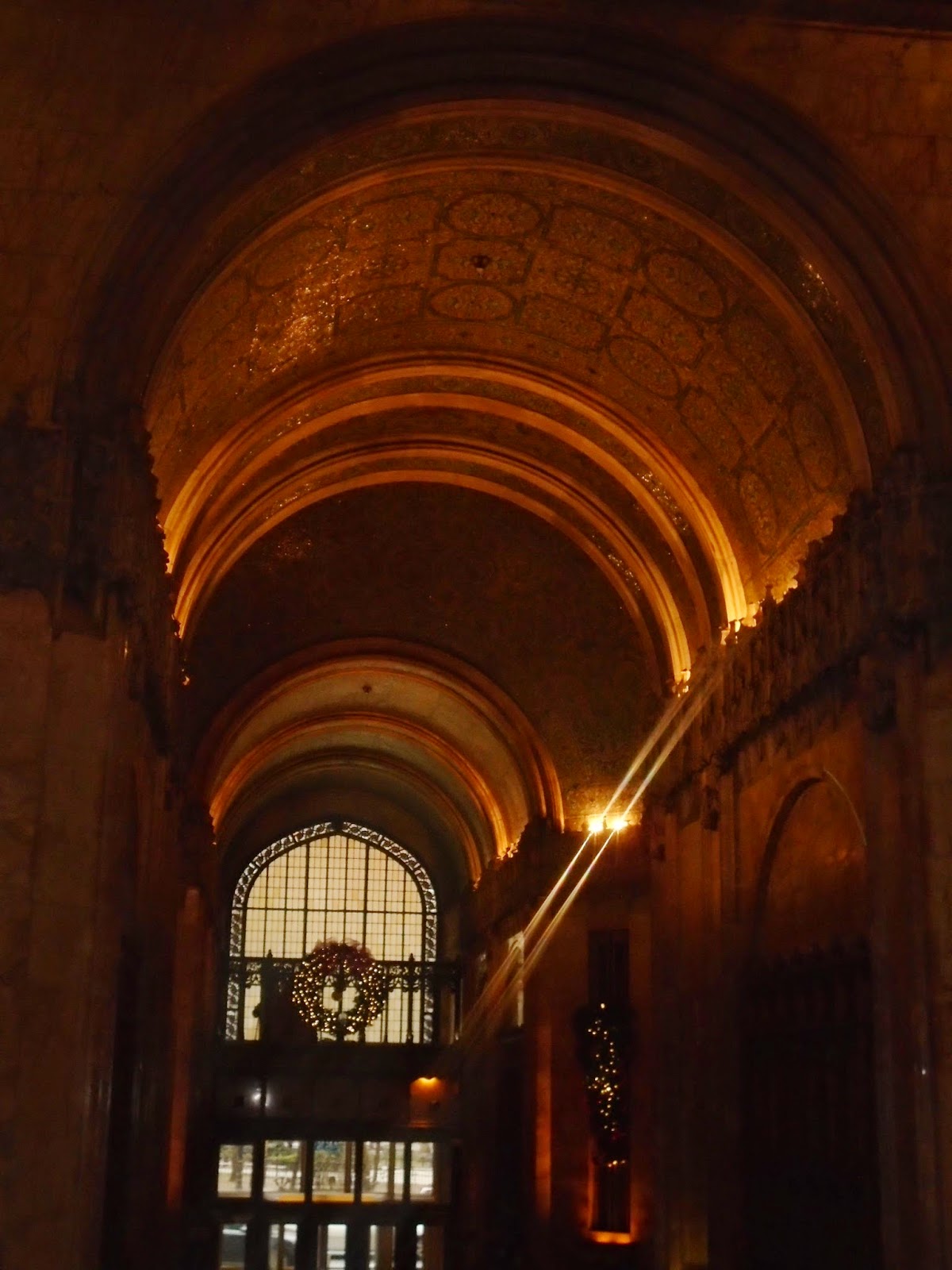Business was going so well that Woolworth hired a famous architect named Cass Gilbert to design his company's corporate headquarters on Broadway, further requesting that it should be the tallest building in the world. Gilbert had designed the beautiful US Customs House in New York a few years before, so Woolworth was confident he would design something extra special. Gilbert got to work and two years later, in 1913, The Woolworth Building was complete.
Now back in the early days of skyscrapers, the giant Woolworth Building would have been a tourist drawcard in itself. People marveled at the neo-Gothic architecture, the gargoyles, and intricate carvings around the main entrance. But inside, office workers had down time at the indoor swimming pool, the day spa, the observation deck, and the restaurant and retail stores in the lower level. And the subway even used to run right underneath, so commuting to and from the tallest building in the world was a breeze.
All of these attractions aside, I reckon that even back when the Woolworth Building was first constructed, people must have remembered it for the same reason that we do today: the lobby. When he designed the lobby, Cass Gilbert totally outdid himself. It is a beautifully ornate, almost church-like space. The ceiling has tiny mosaic tiles all over it, some of which have been coated with gold leaf to give them extra sparkle. Tiffany won the contract to design the lobby's elevator doors, and they are especially fancy. There are marble carvings in the cornices - some of them depict leading figures of the time (including Cass Gilbert himself, cradling a plaster model of the building - see below), but other carvings are those of nonsense characters, put there for a bit of fun.
 Another fun detail is the inclusion of salamanders in the carvings. Did you know that according to legend, salamanders are impervious to flames and can actually extinguish fire? Apparently, lots of buildings all across New York City have salamanders featured in their carvings and metalwork etc to protect the buildings from fire hazards (figuratively, at least). The Woolworth Building was constructed to stand the test of time - fire safety was foremost in Cass Gilbert's mind and the only wood in the whole place was actually in the banisters in the internal stairwells. Superstitious though it may be, you can see the salamanders in the gold work of the mailboxes in the Woolworth Building lobby (see him on the bottom left of the photo here?). Needless to say, I will have to keep my eyes open for more salamanders in other buildings from now on!
Another fun detail is the inclusion of salamanders in the carvings. Did you know that according to legend, salamanders are impervious to flames and can actually extinguish fire? Apparently, lots of buildings all across New York City have salamanders featured in their carvings and metalwork etc to protect the buildings from fire hazards (figuratively, at least). The Woolworth Building was constructed to stand the test of time - fire safety was foremost in Cass Gilbert's mind and the only wood in the whole place was actually in the banisters in the internal stairwells. Superstitious though it may be, you can see the salamanders in the gold work of the mailboxes in the Woolworth Building lobby (see him on the bottom left of the photo here?). Needless to say, I will have to keep my eyes open for more salamanders in other buildings from now on!You used to be able to wander in off the street and browse the Woolworth Building lobby but not anymore. These days, access is by guided tour only (you can book them online here), but it's absolutely worth it. The lobby of the Woolworth Building is just beautiful. I did a one-hour tour yesterday and our guide (Lisa) was sensational. She confessed to spending much of her private time at the New-York Historical Society, reviewing the original plans of the building and reading the original correspondence about its construction and development, which they have stored in their archives there. The trivia Lisa shared with us came from her own exhaustive research, not from anything she parroted from the internet or read off some tired tour script. It was absolutely wonderful and well worth the $30 ticket price. I only pasted a couple of photos from the tour because so many of them were blurry, or just didn't do the splendor of the lobby justice. I would definitely encourage you to add the Woolworth Building to your bucket list of NYC adventures.








